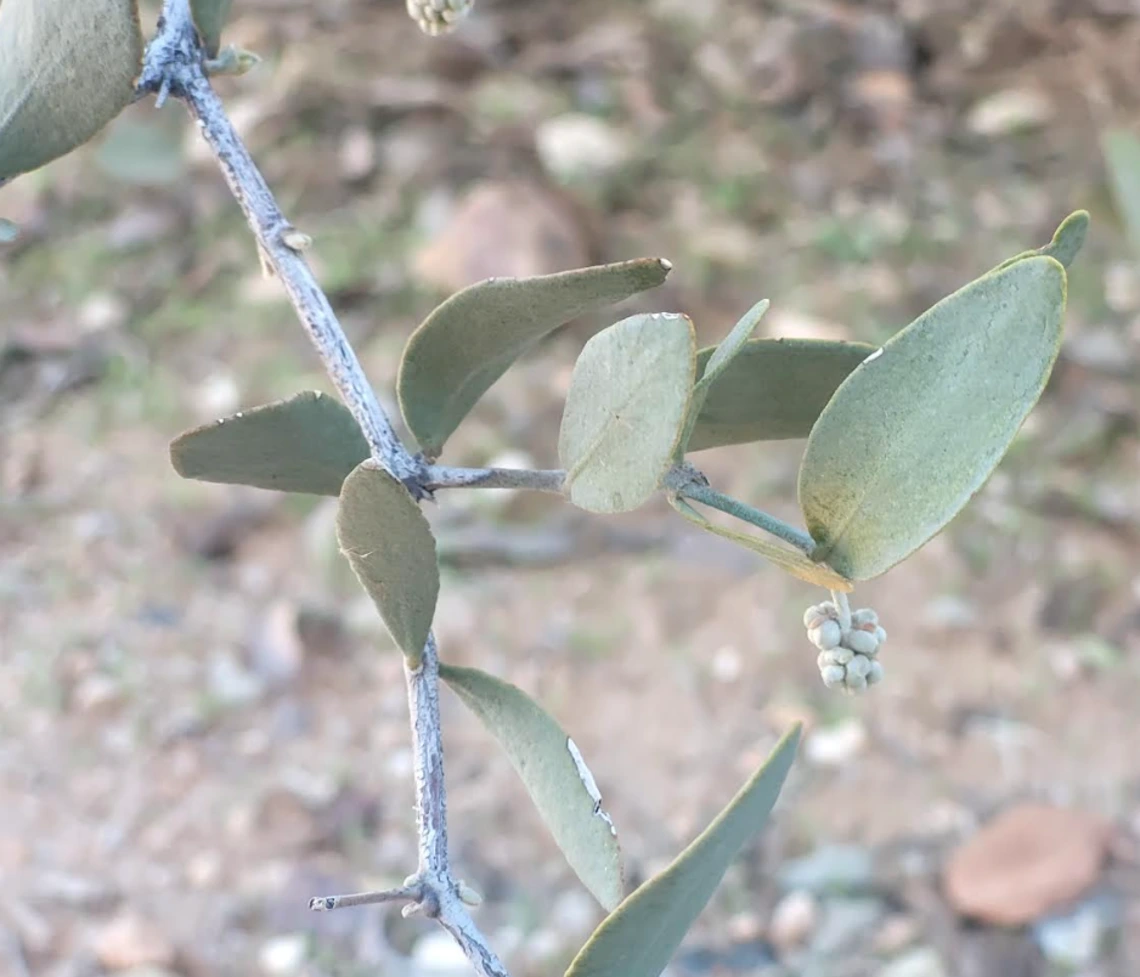Family: Simmondsiaceae
Compound: Sim chi
Synonyms: Buxus chinensis, Simmondsia californica
Geographic Origin: extreme southwestern US, northwestern MX
Characteristics: A woody, evergreen shrub that typically grows about 2.5m (8ft) tall and wide but can reach up to 4.9m (16ft) in height. This is a dense, rounded, sometimes irregular plant that produces a dense canopy of leathery, gray-green oval to elliptical leaves attached oppositely. This plant has dioecious flowers; pale green, bell-shaped flowers on the female plant of this species are borne singly at the end of each leaf node. In contrast, the yellow-green flowers on the male plant are produced in clusters. After the early spring to early summer flowering period, female Jojoba plants bear acorn-like fruits which dry and split open revealing a dark brown to red-brown, almond-like seed.
Natural History: Found at elevations of 304-1524m (1,500-5,000ft) on alluvial plains, bajadas, slopes, dry washes, and canyons. The leaves are browsed by large mammals, and the seeds are consumed by small mammals and large birds.
Cultivation Notes: These tough plants thrive in well-drained soils in partial to full sun. They prefer dry climates and can tolerate saline and nutrient-poor soils. Soil pH can be in a range between 5-9 (strongly acidic to very alkaline). It is hardy to -9.4C (15F). Once established, no extra water is needed though extra water would help the plant reach a larger size and maintain a fuller appearance.
For general plant propagation information, click here
Ethnobotany: A paste from the plant can be used as a treatment for burns, and the oil for preservation of animal hides or styling hair. A tea made from the leaves is said to relieve stomach problems and rheumatism. The raw fruits are edible and somewhat similar to almonds, but they can also be roasted and used to make a coffee like drink or made into cakes.
Citations:
SEINet Arizona – New Mexico Chapter. Retrieved June 21, 2024.
Arizona Sonora Desert Museum.
Duffield, Mary Rose., and Warren D. Jones. Plants For Dry Climates - How To Select, Grow And Enjoy. Lane Publishing Company, 1992.
Othman Al‐Dossary, Bader Alsubaie, Ardashir Kharabian‐Masouleh, Ibrahim Al‐Mssallem, Agnelo Furtado, Robert J. Henry. The jojoba genome reveals wide divergence of the sex chromosomes in a dioecious plant. The Plant Journal, 2021; DOI: 10.1111/tpj.15509



